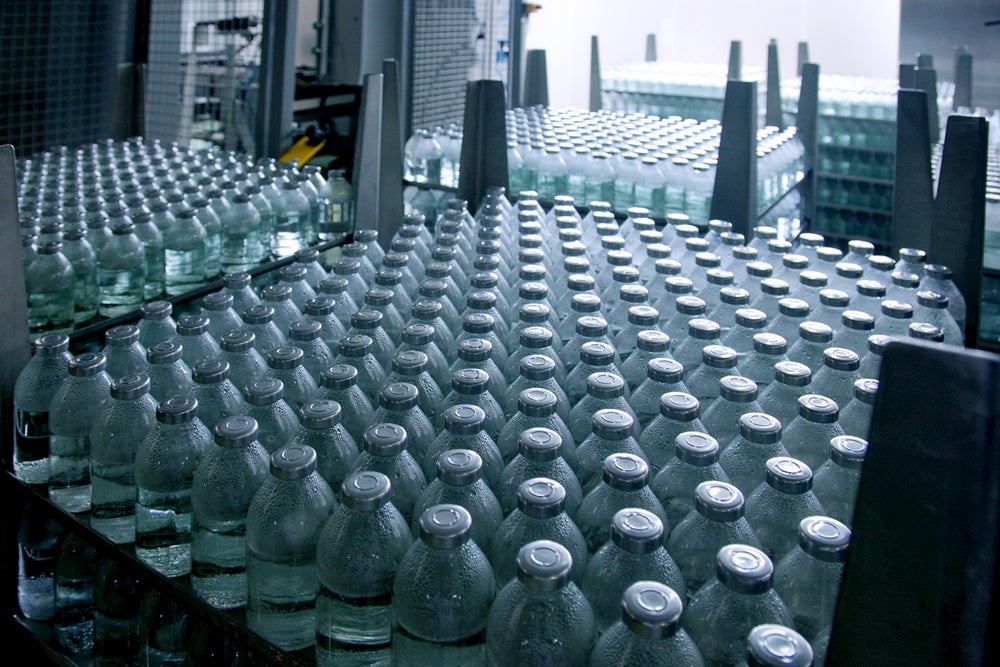
According to a recent report, the global healthcare cold chain monitoring market – valued at around USD $2.5bn in 2020 – will be worth over $5bn by 2027, a compound annual growth rate (CAGR) of 12.2%. Heightened demand in the end-use market and the advent of groundbreaking manufacturing innovations are catalysing expansion. The healthcare sector has exploded with demand for cold chain monitoring, with growing use of the internet of things (IoT) across the supply chain making this increasingly feasible.
The recent surge in demand for cold chain monitoring, catalysed by the COVID-19 pandemic and the need to guarantee transportation of mRNA vaccines in sub-zero temperatures to ensure their viability, has accelerated interest in monitoring of pharmaceutical shipments. It shows no signs of abating; approval and utilisation of biologics continues to rise, bolstering the necessity for cutting-edge cold chain storage, transportation and monitoring solutions. Demand for state-of-the-art technologies capable of remote monitoring within the cold chain pharmaceutical logistics sector is rising with it.
In this era of unprecedented technological advancement, the pharmaceutical industry is witnessing a profound shift in the way their products are monitored and insights are gleaned. Traditionally, real-time data recording was confronted with significant challenges in feasibility and cost. However, the rise of modern data loggers is making dependable monitoring of crucial environmental conditions – such as temperature and humidity – and even other events that can significantly influence the quality of the products – like light exposure and tilt – a reality.
Yet the frequent deployment of data loggers and remote monitoring as separate technologies can be cumbersome and costly. Most digital temperature loggers lack real-time data interactivity; they require a host device for data download. This leads to after-the-fact analysis and quality loss, rather than proactive or predictive monitoring. Delaying the receipt of critical information on shipment problems offers little preventative value for product safety in pharmaceutical supply chains. The rise of modular real-time technology among industry trailblazers is eliminating the need for two distinct systems.
Berlinger’s Modular Real-Time combines temperature logging and real-time monitoring into a single system, offering unprecedented insight into operational handling and product location – all from a unified platform. And these setups utilise cost-effective monitors that communicate directly with a single real-time ‘parent’ device via Bluetooth Low Energy (BLE) intercommunication.
Making module technology with Modular Real-Time
At its core, BLE is a wireless communication technology that excels in establishing secure, short-range connections between devices. One of its standout features is minimal impact on energy consumption, making it an ideal choice for conservation of power. While Bluetooth is commonly found in consumer electronics like mobile phones and wireless headsets, modular monitoring systems like SmartMonitor devices use BLE in uniquely efficient ways.
The SmartMonitor’s system uses BLE-ready devices. They can play two crucial roles. The first is a gateway role, sharing connectivity with the cloud and allowing other SmartMonitor devices to tap into connections. The second is an edge role, allowing other SmartMonitor devices to utilise the gateway SmartMonitor’s connectivity to exchange data with the cloud-powered SmartView. Together, this ensures maximum cloud communication and connectivity; when a SmartMonitor detects a temperature excursion or other alarm, it can rapidly transmit information back to SmartView for the anomaly to be expected and rectified.
None of this would be possible without Modular Real-Time, the linchpin facilitating efficient communication and data sharing among SmartMonitor devices. It ensures that critical information is delivered promptly, contributing to the smooth and secure transit of sensitive products. In a world where speed and safety are paramount, BLE embodies the power of streamlined wireless technology.
BLE: from theory to practice
In the realm of supply chain management, the integration of SmartMonitor systems supported by Bluetooth Low Energy (BLE) has the potential to revolutionise efficiency. However, the journey to harnessing this technology comes with certain hurdles that could derail implementation and rollout for inexperienced practitioners.
One challenge lies in the power consumption of SmartMonitor devices when they are actively engaged in BLE intercommunication. When a SmartMonitor serves as a “mobile hotspot,” akin to a mobile phone in “hotspot” mode, it draws significant power from its battery. Similarly, when SmartMonitor devices employ modular real-time intercommunication to share connectivity, increased communication points can affect battery runtime.
Whatever your cold-chain solution looks like, following some simple tips can help harness the benefits of BLE intercommunication and attain real-time supply chain visibility – all while avoiding potential stumbling blocks:
The first is to ensure BLE is actually enabled on your device. Devices that need to communicate must be actively using BLE; on SmartMonitor devices, for instance, this can be verified on the device display. Another is to ensure that devices are capable of performing their respective roles; at least one device must be capable of fulfilling the gateway role, with cellular connectivity activated via device configuration. Third, BLE intercommunication only becomes active when monitoring devices, whatever their role, are actively taking measurements. SmartMonitor devices that are started before receiving the final configuration policy will automatically reconfigure, so it is essential to ensure this configuration is in place. And ensuring SmartMonitor devices are within radio range of each other will allow them to continue functioning and communicating seamlessly – including during post-stop safety measurements – to provide users with unprecedented insight.
Above all, collaborating with a cold-chain expert like Berlinger, armed with decades of experience in reshaping pharmaceutical supply chains, can prove invaluable. Doing so provides access to market-leading SmartMonitor devices, the easy-to-use Berlinger SmartView, and unparalleled technical support. Real-time cold-chain insights are at your fingertips thanks to the advantages offered by Berlinger’s Modular Real-Time. Download the free whitepaper on this page to find out more.


